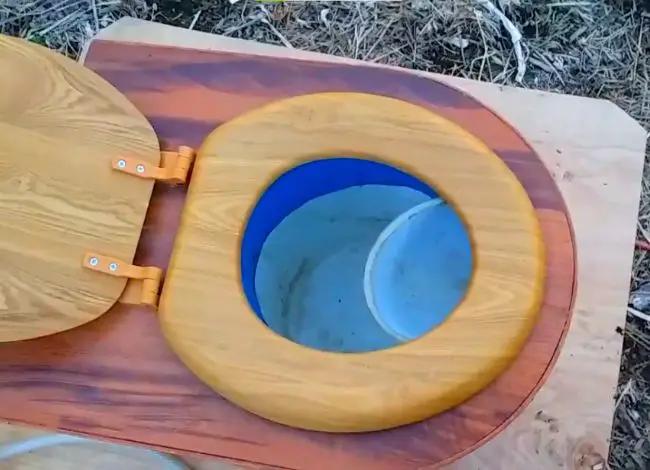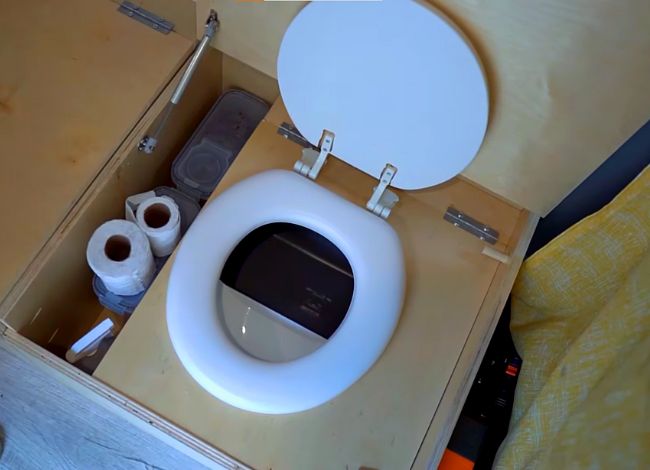Urine disposal is one of the most crucial aspects of maintaining a composting toilet. If you’re facing challenges with managing urine in such a system, you’re in the right place. Knowing how to properly dispose of urine from a composting toilet ensures hygiene, environmental safety, and optimal system performance.
The best practice is to dispose of urine in an eco-friendly and secure manner, ensuring it doesn’t harm the environment. Urine and solid waste should never be dumped carelessly. This article will walk you through the right methods and benefits of using urine-diverting compost toilets, along with safe urine disposal techniques.
Benefits of Urine-Diverting Compost Toilets
Urine-diverting composting toilets offer a range of advantages, both environmentally and practically:
- Separation of Waste: These toilets separate liquid (urine) and solid waste, making it easier to process each type efficiently.
- Odor Control: With proper venting systems and built-in fans, these toilets greatly reduce unpleasant odors compared to traditional toilets.
- Eco-Friendly Design: They are designed with sustainability in mind, helping reduce your ecological footprint.
- Water and Energy Savings: These systems use little to no water, saving thousands of liters annually while also minimizing energy use.
- Compost Production: Solid waste is turned into nutrient-rich compost, which is excellent for gardening and agriculture.
- Urine as Fertilizer: Urine is high in nitrogen and can be safely used as a fertilizer for trees and plants when handled correctly.
- Simple Installation: Urine-diversion systems are relatively easy to install and manage, making them an attractive option for off-grid or eco-conscious living.
- Legal Disposal: With proper separation, liquid waste can often be legally disposed of at local wastewater treatment facilities.
How to Safely Dispose of Urine from a Composting Toilet
Disposing of urine the right way is essential for both environmental health and sanitation. Here’s a systematic approach to follow:
- Dilution is Key: Always dilute urine before disposal. The recommended ratio is 1 part urine to 8 parts water. This dilution minimizes odor and makes the solution safer for disposal or use in gardening.
- Nutrient-Rich Composition: Human urine contains vital nutrients like nitrogen, potassium, and phosphorus, which are beneficial for plants. When diluted, it becomes a valuable fertilizer.
- Avoid Overuse: Even though urine is nutrient-rich, avoid overusing it in the same spot. Rotate areas or apply in larger spaces to prevent soil saturation.
- Where to Dispose:
- Pour it on compost piles to enhance decomposition.
- Use as fertilizer around non-edible plants and trees.
- Dispose of in designated soakaway pits or greywater systems, following local regulations.
Important Tip: Never dump undiluted urine directly into the environment or near water sources, as its high nutrient content can disrupt natural ecosystems.
Implementing a HepvO Trap System for Urine and Greywater Management
Why Use a HepvO Trap?
Proper disposal of blackwater and greywater is crucial for sanitation and odor control, especially in off-grid or eco-friendly sanitation setups. One effective solution is implementing a HepvO waterless trap system, which ensures hygienic and odor-free drainage from showers, basins, and urine-diverting toilets.
Soakaway Pit for Urine Management
A dedicated soakaway pit serves as an effective and sustainable method for managing urine and some solid waste. If installed correctly, it helps prevent foul odors and contamination. For optimal efficiency, the soakaway pit should be used only for urine, not greywater or blackwater, as this helps reduce bacterial buildup and improve percolation in the soil.
Managing Greywater Discharge
Greywater—water from sinks, showers, and basins—often contains residues such as grease, soap, fat, and skin cells. These substances can decompose over time and generate unpleasant odors. When not properly trapped or filtered, these odors can linger in your plumbing system, particularly around sinks and drains.
Installing a HepvO inline trap or a U-bend trap helps prevent these odors from entering your living space. These traps allow wastewater to flow out while blocking foul smells from coming back in, improving overall sanitation and user comfort.
Integrating Urine and Greywater Systems
When urine is diverted into greywater systems, it’s important to manage it efficiently to prevent odor and blockages. A HepvO trap or similar inline solution ensures that urine flows smoothly through the system without allowing gas or smell to return.
Urine, when combined with compost or soil through a soakaway system, provides valuable nutrients like nitrogen that can act as a natural fertilizer. This eco-friendly approach supports sustainable wastewater management while benefiting soil health.
Using an Infiltration or Filter Bed
A filter or infiltration bed is another essential component in sustainable water disposal systems. These beds are designed to absorb and filter both greywater and small amounts of urine, reducing environmental impact. It’s critical to ensure the system is built according to local ground conditions and guidelines.
Performing a percolation test helps determine whether your soil can effectively absorb and treat the discharged liquids. Proper percolation ensures that the infiltration bed doesn’t become waterlogged or ineffective.
Discharging into an Existing Sink Drain
In some cases, it may be feasible to discharge urine through the existing sink drain system by integrating it with a urine-diverting toilet such as the Separett model. These toilets separate solid and liquid waste, and when connected properly, prevent unpleasant odors through the use of a U-bend or HepvO trap.
This configuration can be highly effective in compact spaces or where installing a separate soakaway pit is not possible. Ensure that all connections are airtight and include odor-blocking components to maintain hygiene.
What Should You Do with Urine from a Compost Toilet?
Urine from compost toilets is not waste—it’s a valuable resource that can be used effectively if managed properly. Below are the best practices for handling urine from compost toilets, including safe disposal methods, cleaning tips, and how to make the most of its nutrient value.
1. Discharge and Dilution Using the Separett Ejektortank
One of the most effective and eco-friendly ways to manage urine is by using the Separett Ejektortank. This 50-liter storage tank is specifically designed to dilute and discharge urine safely into your garden or lawn. Here’s how it works:
- Connect a garden hose to the water inlet and the Ejektortank valve.
- As water flows through, the tank mixes urine with water at an optimal dilution ratio.
- The resulting nutrient-rich solution can be safely distributed to non-edible plants and lawns.
This method helps recycle nutrients such as nitrogen and potassium—making it an ideal, sustainable solution for urine management in composting toilets.
2. Preventing Blockages and Maintaining Cleanliness
To ensure your compost toilet works efficiently, it’s crucial to prevent calcification and blockages in the urine drainage pipes. Here are some tips:
- Use white vinegar regularly in the urine diversion bowl to break down mineral build-up and prevent odor.
- Install a Bio Drain block or enzyme-based cleaner to keep pipes clean and urine flowing smoothly.
- Regularly inspect and clean the urine channel or “sigma cup” to avoid blockages.
- Ensure proper slope and connection of urine pipes to promote gravity flow and reduce the risk of clogs.
Keeping your compost toilet clean and free-flowing ensures longer-lasting performance and a hygienic user experience.
3. Land and Sewer Disposal Options
For those who do not use urine in gardening, proper land or sewer disposal is essential:
- If allowed by local regulations, urine can be diverted to the main sewer line or soak-away pit.
- Always follow local sanitation guidelines to ensure environmental safety.
- Avoid dumping undiluted urine directly into storm drains or waterways—it must be processed through a suitable filtration or absorption system.
Note: In RVs or caravans, urine should be disposed of according to specific waste management protocols, which often differ from fixed composting toilet systems.
4. Using Urine as a Natural Fertilizer
Urine contains high levels of nitrogen, potassium, and phosphorus, making it a potent natural fertilizer. However, to use it safely:
- Always dilute urine with water, typically at a 1:8 ratio (1 part urine, 8 parts water), before applying it to plants.
- Use only on non-edible plants or decorative gardens to minimize health risks.
- Apply it directly to soil—not leaves—for best absorption and safety.
Avoid overuse, as excessive nitrogen can harm plants and soil health. Always rotate application areas and monitor plant response.
5. Environmentally Safe Dumping and Disposal
For large volumes or community compost systems, always dump urine through approved systems:
- Combine urine with high-carbon materials like sawdust, straw, or wood shavings in the compost pile to balance its high nitrogen content.
- Avoid adding urine to piles containing fresh lawn clippings or food waste without carbon-rich absorbents, as this may create odor and imbalance.
- Make sure the composting system is ventilated (via exhaust fans or airflow channels) to encourage moisture evaporation and odor control.
Properly managed urine contributes to a safer, more efficient composting system.
Final Thoughts on Urine Management in Compost Toilets
Urine-diverting compost toilets offer an eco-friendly way to manage human waste while recycling valuable nutrients. Whether you’re using it as fertilizer or disposing of it through approved sewer lines, proper urine management ensures safety, hygiene, and environmental sustainability.
Local public health departments and environmental protection agencies often provide guidelines on how to dispose of urine and solid waste responsibly. Always check regulations in your area before dumping.
When combined with ventilation systems and proper composting materials, urine and solid waste from compost toilets can be safely processed, evaporated, and returned to the environment without harm.
We are really lucky to have a hard-working, multi-skilled plumber on our team. Collin D. Gallegos, a professional plumber who has worked with us since 2012, is an expert in vent, septic, and drainage systems. He is a Certified Master Plumber and has worked on various commercial plumbing projects. He usually helps our readers resolve plumbing and pipe-related issues with a proper DIY troubleshooting and repair guide.